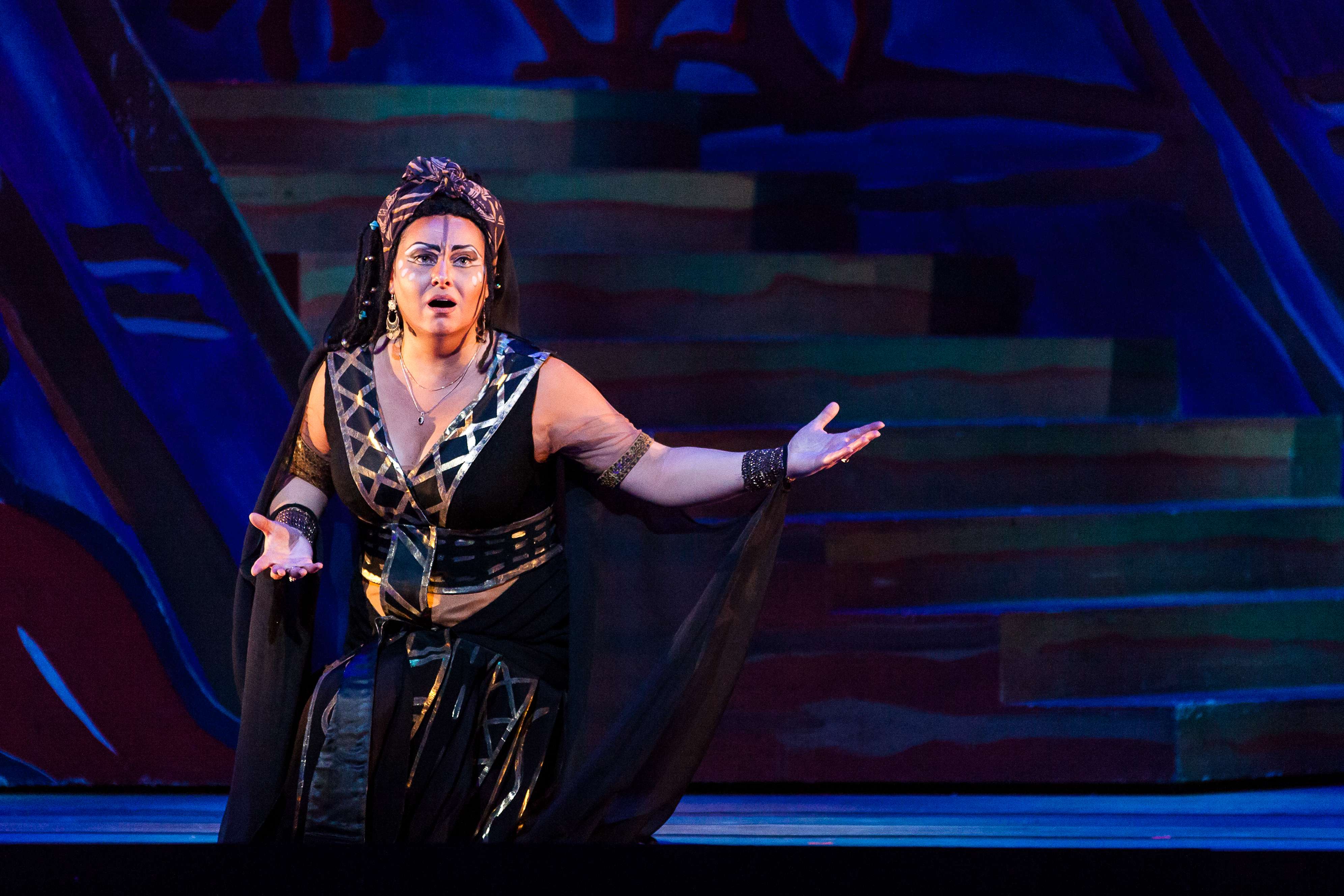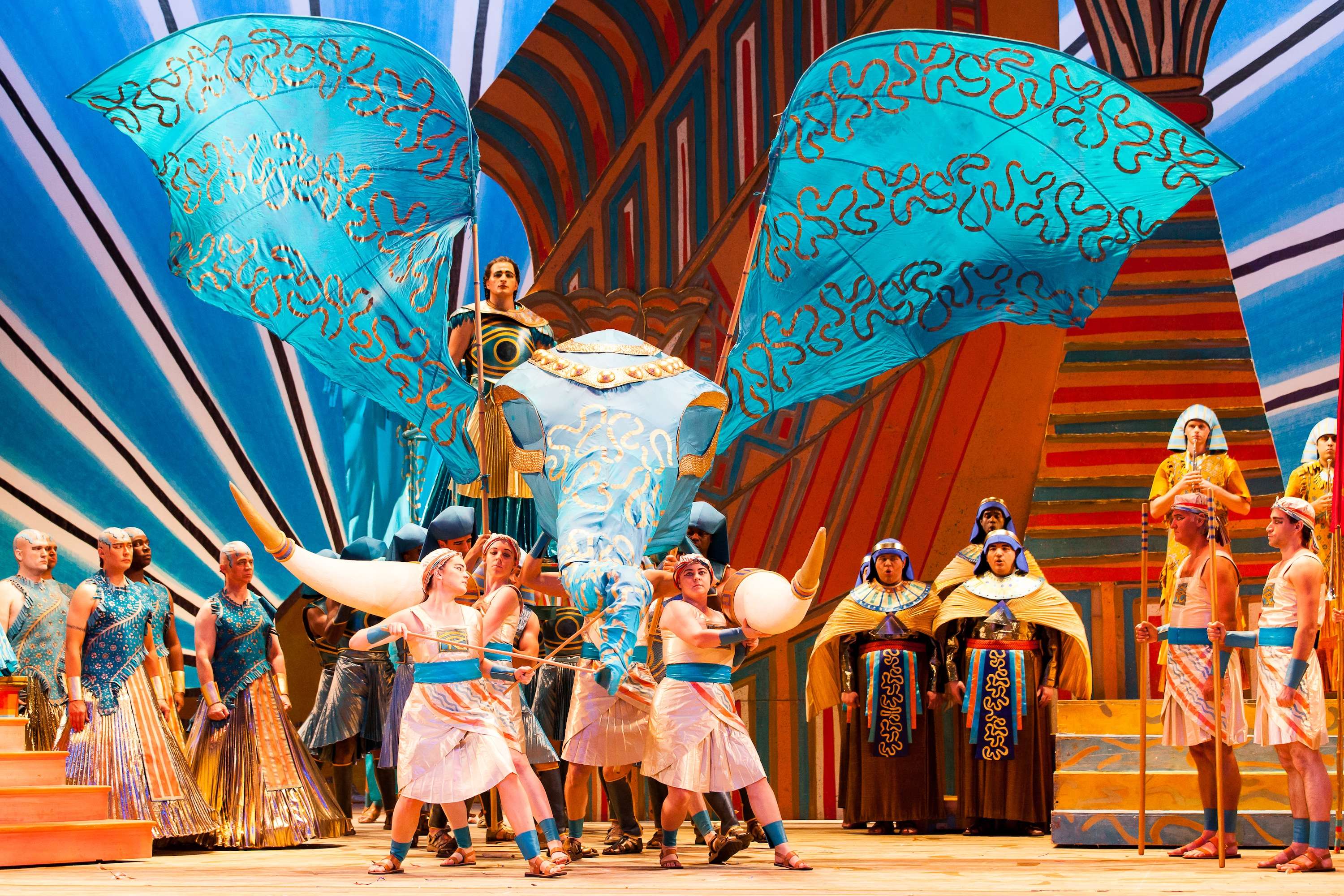|
Back
An Aida Better Heard Than Seen Houston
Brown Theater, Wortham Center
10/18/2013 - & October 20, 26, 29, November 1, 3, 9, 2013
Giuseppe Verdi: Aida
Liudmyla Monastyrska (Aida), Dolora Zajick (Amneris), Riccardo Massi (Radames), Scott Hendricks (Amonasro), Ain Anger (Ramifs), Robert Gleadow (King of Egypt)
Houston Grand Opera Orchestra and Chorus, Antonino Fogliani (Conductor)
José Maria Condemi (Director), Zandra Rhodes (Set and Costume Designer), Michael James Clark (Lighting Designer)

L. Monastyrska (© Lynn Lane)
Aida is already something of a caricature. Verdi's score, replete with Eastern clichés that only a composer of his ingenuity could fold into a personal language, and Ghislanzoni's libretto, which verges on a heavy-handed insistence on Egyptian and Ethiopian machismo, combine into a surprisingly effective drama. In Houston Grand Opera's current production, that drama is successfully conveyed through solid singing and fantastic orchestral playing, but is let down by unfortunate visual design choices.
Liudmyla Monastyrska sings Aida perfectly. She easily soars over even Verdi's brassiest tuttis, while also negotiating intimate passages with clarity and control. "O patria mia" is stunning--a true climax to the entire production--and is capped by a sumptuous, dolce high C. The accompanying oboe obligato is equally gorgeous. It's been only a few months since we heard Dolora Zajick dominate HGO's production of Trovatore, and fortunately she is better matched by the rest of the cast in this production. She and Monastyrska are wonderful rivals, thrilling to watch and hear as their characters develop.
The men are also solid, if not outstanding. Scott Hendricks, always reliable, is the standout, and one wishes he had more to sing. Riccardo Massi is physically imposing as Radames and has the technique to negotiate the difficulties of the role. The voice is small, however, especially when compared to Monastyrska's power. We shouldn't feel surprised when Radames returns as a victorious military leader, but we never get a sense of potency from Massi's singing.
Antonino Fogliani returns with the authority he brought to Lucia and, conducting from memory, leads a rhythmically taut and powerful performance from orchestra and chorus. Wind obligatos--clarinet, bass clarinet and aforementioned oboe--are excellent, as is the brass playing from nimble trumpet to round, full cimbasso.

R. Massi (© Lynn Lane)
The letdown of the production is the visual aspect. Sets are rendered in pale pastels with sloppily drawn hieroglyphs that bring to mind a mid-1990s cartoon. The costumes are an odd bunch: sometimes effective (Aida's black dress in the second act), sometimes curious and otherworldly (the priests, also in the second act), sometimes offensive (Amonasro relegated to a savage lampoon), but mostly verging on silly (the inverted, metallic muffin liners that the chorus dons in the first act). The first act finale is underwhelming. The choreography of dancers and flag-bearers would be impressive if there weren't only a handful of each, and the golden confetti that showers the returning Radames feels cheap. If a sense of whimsy was intended, it wasn't taken far enough and, perhaps, isn't wholly appropriate for this monumental opera. This seems to be a consensus for Zandra Rhodes' misfired design concept.
Those who love grand opera, Verdi and excellent singing will not be disappointed by this production. Those looking for a fresh, convincing new approach to staging Aida will have to wait until HGO has another go at a new production.
Marcus Karl Maroney
|